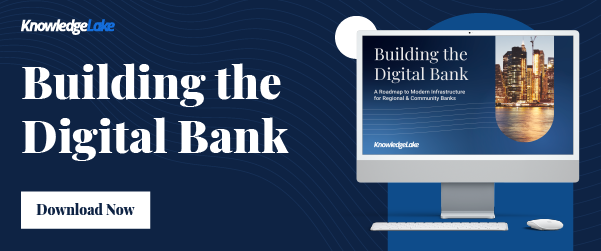5 Keys to Building a Digital Banking Platform
Digital transformation is rapidly changing the banking industry, requiring traditional banks to take a more agile approach and adopt modern technologies to compete with digital-native FinTechs.
In this increasingly digital age, developing a digital banking platform is paramount for any financial institution looking to stay ahead of the curve.
In this sense of the word “platform,” we are talking in a general sense about the various suite of applications and digital services—most readily available but some custom—that go into making your digital offerings.
In this post, I lay out the characteristics your institution should be focusing on when designing such a platform. Inevitably, some applications and architecture will come first, and others will come later.
As you work on creating your digital banking platform over time, there are five vital elements to consider for design and planning:
Incremental Change, Not Rip & Replace
One of the advantages that more traditional banks hold over FinTech companies is their reliability and continuation of service. Therefore, it is essential for banks and credit unions to continue to offer existing services throughout any digitization process.
Ripping out reliable and trusted offerings and systems to pursue exciting new technologies should be avoided at all costs. Instead, a digital platform should iterate and expand upon existing capabilities. In other words, seek to add value for customers rather than slashing services in pursuit of something new.
Cloud-Native Design
Cloud computing has moved to the forefront of any technology conversation within financial services. This holds true for the banking sector as for any other. Research from American Banker reveals that “cloud-based architectures” rank at the very top of bank technology roadmaps. And, in a report on cloud banking, Deloitte claims that hosting services and data in the cloud allows banks to improve service resilience, boost security, and synchronize operations across various branches and departments.
If banks are to seize upon the opportunities offered by the cloud, they need to inject cloud-centric thinking throughout the design phases of any digital banking platform. In other words, think cloud first.
Extensibility
Banking platforms aren't like products that can be (relatively) quickly deployed. Likewise, they cannot be abandoned at the end of implementation or the next development cycle. Instead, they remain in service, and must be slowly expanded upon and improved for years —perhaps more than a decade — at a time.
For this reason, a sound banking platform must offer high extensibility. A better word might be “adaptability.” Banks need to measure how easily a platform can be built upon and how much effort it would take to achieve desired outcomes. This extensibility requires that a platform be easy to modify and upgrade, and also resilient in the face of new business demands. Will you be able to easily add new apps and services?
Rapid Iteration
For some apps and platforms, lagging slightly behind the curve is a mere annoyance. When it comes to banking, however, upgrades and security improvements must be deployed quickly.
For this reason, a digital banking platform must accommodate rapid iteration and development. The development team must learn how customers navigate the system and continuously make it better.
A bank’s technology team must be able to quickly access new tools to expand offerings as they become available. Without this ability to iterate, a platform risks becoming a serious drag on operations or, worse, obsolete, within just a few years. This can be devastating for a bank that puts significant human and financial capital into their digital transformation efforts. It’s also difficult for customers who have started to rely on new offerings and services. Those same customers won’t hesitate to look to other banks that provide up-to-date products and a better user experience.
Co-Creation
Creating a new banking system represents an incredible opportunity to work customer needs and expectations into the very foundations of how the bank operates.
Talk to your customers. New and innovative companies make this a priority. So should financial institutions. Make customer interviews (what product management types call “voice of the customer”) an early part of the planning process. After all, banks need to build what their customers want. Nail that understanding before investing time and money creating an inflexible platform and trying to sell them on already-completed products.
This effort should also apply to the bank’s compliance needs. If the system can be set up to easily track and audit the information needed to meet regulatory and auditor requirements, you will eliminate the time, effort, and cost required to retrofit the system onto an already existing framework. It’s vital to consider and consult with customers and the compliance team before launching any digitization project.
Building a digital banking platform is a challenge. But the alternative is losing business to disruptors who provide the digital-first experience customers have come to expect. Keep these five key elements in mind to create a digital platform that allows for long-term competitiveness.

